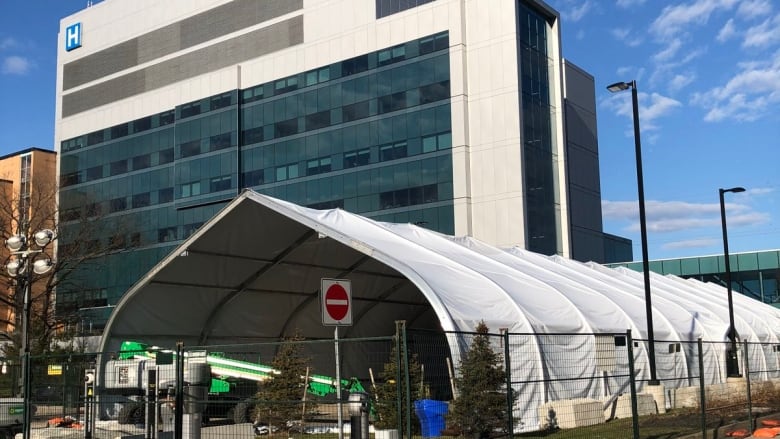Burlington hospital's 93-bed pandemic unit has yet to see first COVID-19 patient
Chief of staff previously said it would be a 'blessing' not to use the space

The big, white pandemic response unit (PRU) still stands outside Joseph Brant Hospital, but more than four months after its urgent construction, it has yet to see its first patient.
The hospital spent more than $2 million transforming part of a parking lot into a facility capable of caring for 93 people with COVID-19 in preparation for a surge of patients that never came.
"Halton, Burlington, Hamilton and area have not seen the significant number of COVID cases that were anticipated, or an overflow that would have necessitated expanding care to the PRU," wrote spokesperson Ann Lamanes in an email to CBC.
"We were able to successfully treat all COVID cases on a designated floor within the hospital."
It's an outcome hospital officials always hinted was possible.
Even when the unit was being assembled and filled with ventilators and beds, Dr. Ian Preyra, chief of staff at the Burlington hospital, suggested they were creating capacity based on the "worst-case scenario."
"It would be a blessing if we didn't have to use this space," he said at the time.
"I think the greatest praise we could receive after all this is all said and done is that Joseph Brant Hospital was over prepared."
Halton has seen a total of 926 cases during the pandemic as of Monday, including 25 people who have died and 880 who have recovered. There were 21 active cases in the region.
Four of those active cases are in Burlington, which has reported a total of 192 cases of which 181 are resolved and seven have died.
The PRU structure was shipped in from Calgary and graded for snow, high winds and even hurricanes, according to Mark Watts, president of BLT Construction, the company charged with erecting it in a tight-two week timeline back in early April.

It may get a chance to weather the colder months as the hospital isn't ready to dismantle it just yet.
Lamanes said Joseph Brant is exploring different ways to make use of the unit, including preparing for a potential second wave of the virus in the fall and winter.
COVID-19 is an "ongoing threat," she said, adding the hospital will be ready with a "state-of-the-art temporary structure that can serve as a regional resource to house and provide care to COVID patients."